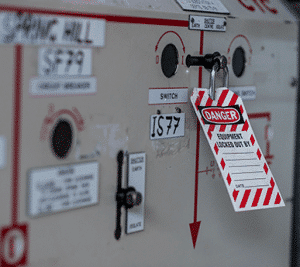The Basic Principles Of Roar Solutions
The Basic Principles Of Roar Solutions
Blog Article
5 Easy Facts About Roar Solutions Described
Table of ContentsAn Unbiased View of Roar SolutionsThe Buzz on Roar SolutionsThe smart Trick of Roar Solutions That Nobody is Discussing
In such an atmosphere a fire or surge is possible when three standard problems are met. This is usually referred to as the "harmful location" or "combustion" triangle. In order to protect installations from a possible surge a technique of evaluating and classifying a possibly unsafe location is called for. The purpose of this is to make sure the right choice and installment of equipment to inevitably protect against a surge and to make certain safety of life.
(https://pagespeed.web.dev/analysis/https-training-roarsolution-com-au/mm9wy036rp?form_factor=mobile)
No devices should be installed where the surface temperature of the equipment is above the ignition temperature of the given danger. Below are some common dirt dangerous and their minimal ignition temperature level. Coal Dirt 380C 225C Polythene 420C (melts) Methyl Cellulose 420C 320C Starch 460C 435C Flour 490C 340C Sugar 490C 460C Grain Dirt 510C 300C Phenolic Material 530C > 450C Aluminium 590C > 450C PVC 700C > 450C Soot 810C 570C The probability of the threat being existing in a focus high sufficient to trigger an ignition will certainly differ from location to place.
Harmful area electric tools maybe created for use in higher ambient temperatures. Field Repair Service By Authorised Employee: Complicated screening may not be called for nonetheless specific procedures might require to be complied with in order for the equipment to preserve its third event score. Each piece of tools with a harmful ranking need to be examined independently.
The Greatest Guide To Roar Solutions
The tools register is a detailed data source of devices documents that includes a minimum collection of fields to determine each product's location, technological parameters, Ex classification, age, and ecological information. The ratio of In-depth to Close examinations will certainly be established by the Devices Danger, which is examined based on ignition risk (the probability of a source of ignition versus the likelihood of a flammable atmosphere )and the unsafe area category
( Zone 0Area 1, or 2). Carrying out a durable Risk-Based Assessment( RBI )strategy is essential for guaranteeing conformity and security in managing Electrical Devices in Hazardous Areas( EEHA).
Roar Solutions Things To Know Before You Buy

In terms of explosive risk, a hazardous location is an atmosphere in which an explosive ambience is present (or may be expected to be existing) in quantities that call for special precautions for the construction, installment and use tools. eeha. In this short article we check out the challenges faced in the work environment, the threat control steps, and the required proficiencies to function securely
It is a repercussion of contemporary life that we manufacture, keep or deal with a variety of gases or liquids that are considered combustible, and a variety of dusts that are considered flammable. These compounds can, in particular problems, develop explosive environments and these can have major and unfortunate repercussions. A lot of us recognize with the fire triangle get rid of any among the 3 components go right here and the fire can not take place, but what does this mean in the context of dangerous locations? When damaging this down right into its easiest terms it is essentially: a combination of a certain amount of release or leak of a certain substance or material, blending with ambient oxygen, and the existence of a source of ignition.
In most circumstances, we can do little about the levels of oxygen airborne, yet we can have substantial impact on resources of ignition, for example electrical tools. Hazardous areas are documented on the hazardous location classification drawing and are identified on-site by the triangular "EX" indication. Right here, amongst other key details, areas are divided into three types relying on the risk, the possibility and duration that an explosive atmosphere will certainly exist; Zone 0 or 20 is regarded the most harmful and Zone 2 or 22 is deemed the least.
Report this page